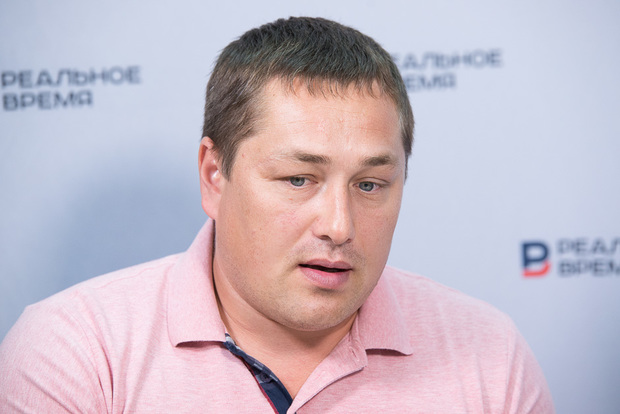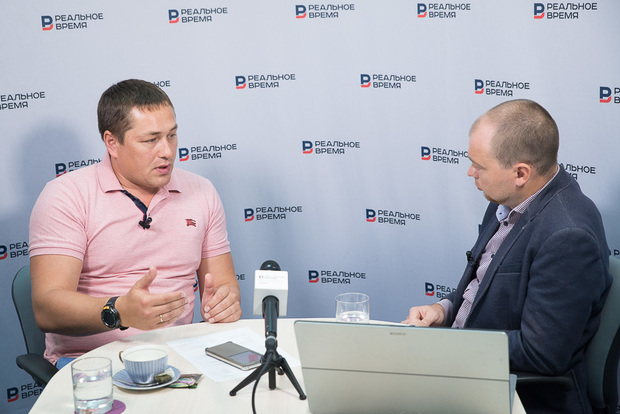''The Zambezi River'' will be opened by the end of 2018 at best''
The purchase of animals for the first stage of the Kazan Zoo requires $4 million, and the ticket price will rise to 400 rubles
The first, African, stage of the new Kazan Zoo Botanical Garden can be opened in late 2018. The visitors will have an opportunity to see unique for Russia African elephants, giraffe and flamingoes. But they'll have to part with the white bear and the alpaca for a while. How much will they spend on purchase of animals, how the ticket price will change and why the Zoo Botanical Garden needs to create a Safari Park near Kazan – read in the online conference of Realnoe Vremya with the zoo director Fanis Nurmukhametov.
From ''The Zambezi'' through ''Russia'' straight in ''The Amazon''
The first phase of the new zoo is ''The Zambezi River''. This area of 7 hectares will be devoted entirely to Africa. About 80% of the total amount of work have already been implemented. The animals will be populated only when all necessary construction works are finished:
''It is impossible to have animals when the construction works are underway. The flight to Kazan alone is stress for animals. Therefore, in the zoo for them there should be quiet conditions to allow animals to recover. Construction noise does not allow animals to feel comfortable,'' explained Nurmukhametov.
The second location of the new zoo after Africa will be Russia. Its territory will be divided into three parts: ''Wrangel Island'', ''The Ussuri River'' and ''Lake Baikal''. The third location is South America, ''The Amazon River''. It will be next to the Kaban Lake and the Vakhitov Square.

It is impossible to have animals when the construction works are underway. The flight to Kazan alone is stress for animals. Therefore, in the zoo for them there should be quit conditions to allow animals to recover
At best, the aviaries and the territory of ''The Zambezi River'' will be ready by June 2018. Since that time, the zoo will begin to buy and bring animals. New zoo residents will have to spend some time in quarantine, and then go through a period of adaptation. It takes at least four months. So in the best case, ''The Zambezi River'' will open by the end of 2018.
There is no exact term of implementation of the projects ''Russia'' and ''The River Amazon'', said the guest of the edition. The zoo is not going to rush the builders. If to accelerate the work now, it is possible to make mistakes. It will be much harder to correct then when the animals already live here.
''Our goal is to become the best zoo in Russia and one of the best in Europe,'' said the interlocutor of the edition. ''Everyone is waiting for the new zoo. We have employees who have worked for 40 years. When they heard that the money for the construction were given, they broke into tears of happiness and said, ''Will we really see it?''
Unique elephants and a farewell to the alpaca
The zoo is going to spend $4 million for the purchase of animals for ''The Zambezi''. They plan to find money from sponsors.
The Kazan zoo will be the first in Russia that will have African elephants. In other zoos there are only Asian. In the capital of Tatarstan they will bring not large adults but young 4-5-year-old animals. The Zoological and Botanical Garden is being prepared for their arrival. The zoo staff will be sent to Europe to work with African elephants. The elephants will need special attention after moving to Kazan. According to Nurmukhametov, some time the employees will have to live with them.

Besides, the Zoological and Botanical Garden is planning to buy giraffes, rhinos, hippos, gorillas and chimpanzees, flamingos, ostriches.
The ''old'' animals of the Kazan Zoological and Botanical Garden have different fates. The inhabitants from Africa will be relocated to a new area. South American animals will be repurchased by Russian zoos or exchanged for other animals. So, if you haven't seen white and brown bears, hyenas dogs or alpaca — it's time to go to see them.
''Tame cockroaches'' and more expensive tickets
In addition to the reconstruction and delivery of new animals, the Zoological and Botanical Garden plans to experiment with excursions. Following the Kaliningrad zoo, in Kazan they are thinking about night excursions. So visitors can see how animals behave at night, says Nurmukhametov.
The contact zoo will also be updated. Here it will be possible to see and touch the ''safest'' animals. Fans of exotic will be able to hold even the huge Madagascan cockroaches. In the future on the territory of ''Russia'' there will be bird aviaries, where visitors also can enter.
On the territory of the zoo there will be playgrounds, but without the big rides — so the noise was less. Also, there will a stage for local festivals and themed — to each location — catering zones.

The zoo staff have two more ideas. The first one is to do a nursery near Kazan, which will grow into a safari park. The second idea Nurmukhametov did not tell, ''It is better we first do it, then we will tell,'' he added.
The pricing policy will also change. Now an adult ticket costs 200 rubles, children — 100 rubles, reduced — 60 rubles. After the reconstruction, the price of an adult ticket can rise to 400 rubles.
''Our costs for maintaining the animals is 72 million rubles a year. When new territories are opened, there will be new animals — our costs will increase. Gasoline is expensive, water is expensive — we will not be able to stay within those 200 rubles,'' explained Nurmukhametov.
But for now the global aim is to make the zoo as open and friendly for animals and guests. One of the steps is a glass enclosures instead of cages. For the safety of visitors in some cages there will be a special mesh, ''electro shepherds'' (they will electrocute an animal if the animal is too close to the glass) or a moat. In summer the animals will be in outdoor enclosures during a day, at night — in covered. In the winter they will be relocated to indoor ones.